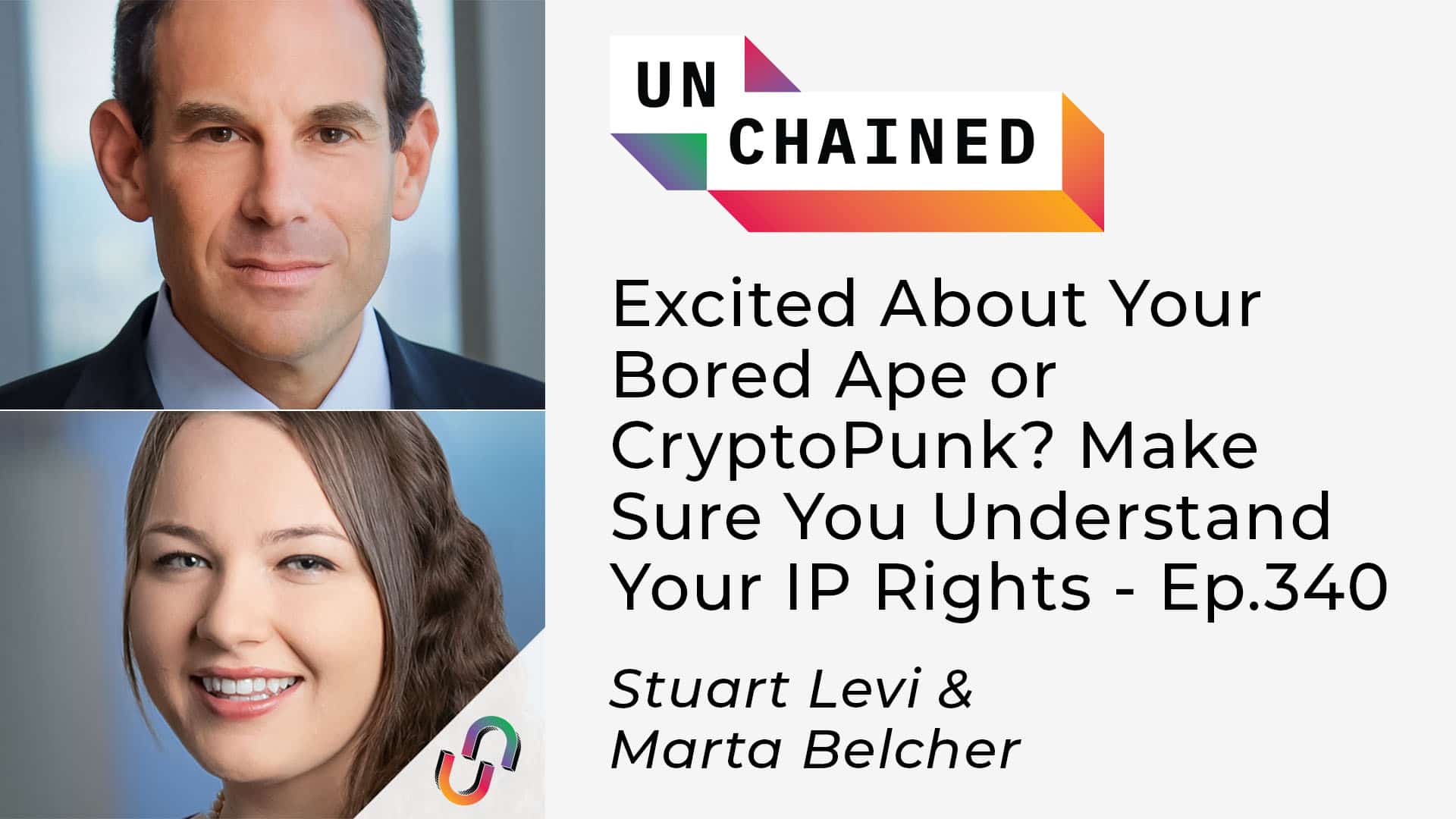Stuart Levi, co-head of the Technology Transaction and Intellectual Property Group at Skadden Arps, and Marta Belcher, general counsel and Head of Policy at Protocol Labs, break down the legal issues surrounding NFTs specifically in the context of Yuga Labs’ recent purchase of CryptoPunks and Meebits IP rights. Show highlights:
- the definitions and differences between copyrights, trademarks, and rights of publicity (name, image, likeness)
- how NFT projects have evolved in the past 12-18 months and what that means for the rights of NFT holders
- why NBA Top Shot’s licensing model is the best model for famous brands entering the NFT space
- how the popularity of PFPs and the open-source ethos of crypto has led to confusion regarding the commercial rights of NFT holders
- what you are getting when you buy an NFT (hint, it’s not copyright)
- the misconceptions surrounding Yuga Labs’ acquisition of Crypto Punks and Meebits
- why Bored Ape Yacht Club NFT holders most likely cannot use the Bored Ape Yacht Club brand or logo
- what issues web3 projects face in getting NFT holders to accept terms and conditions
- why web3 projects should protect their trademark
- what a Creative Commons license is, and how it can be used in the NFT space
- what sort of licenses exist in the NFT space
- why secondary sales and transfers of NFTs pose such massive problems for copyright and trademark owners
- how marketplaces are handling terms and conditions
- what NFT projects can do to help the transfer of copyrights and trademarks
Announcing The Cryptopians Book Clubs!
On April 26th, I will be selling NFT tickets to five 90-minute virtual book clubs in which 22 people can discuss “The Cryptopians” with me and with each other — without worrying about spoilers! Two of the book clubs will also feature special guests.
The sale will go live on Tuesday, April 26, at 1pm ET/10am PT, and tickets will be $100 each. (The sale will be on Bitski, but the NFTs will not be visible until the sale goes live on the 26th): https://www.bitski.com/@laurashin/created
Here is the schedule:
- Monday May 2, at 8pm ET/5pm PT with Laura Shin
- Tuesday, May 3, at 7pm CET/1pm ET/10am PT with guests Christoph Jentzsch, Lefteris Karapetsas, and Griff Green
- Thursday, May 5, at 6pm CET/12pm ET/9am PT with Laura Shin
- Monday, May 9, at 6pm CET/12pm ET/9am PT with guest Andrey Ternovskiy
- Tuesday, May 10, at 9pm CET/3pm ET/12pm PT with Laura Shin
If you’d like to participate, be sure to mark your calendars for the sale time on April 26th. Hope to see you in one of the book clubs!
Thank you to our sponsors!
Crypto.com: https://crypto.onelink.me/J9Lg/unconfirmedcardearnfeb2021
Beefy Finance: https://beefy.finance
Cross River Bank: https://crossriver.com/crypto
Galaxis: https://galaxis.xyz/
Episode Link:
Marta Belcher
Stuart Levi
Content on NFT IP/Legal Issues
- Josh Durham on IP rights and NFTs
- Punk 6529 on CryptoPunks and Yuga Labs
- Decrypt on stolen IP
- Why IP rights are meaningless
- IP questions from DC Investor
- The Copyright NFT bible
- What Exactly Do You Get When You Buy an NFT? Three Lawyers Discuss
Difference between copyright and trademark
Read the episode transcript here


